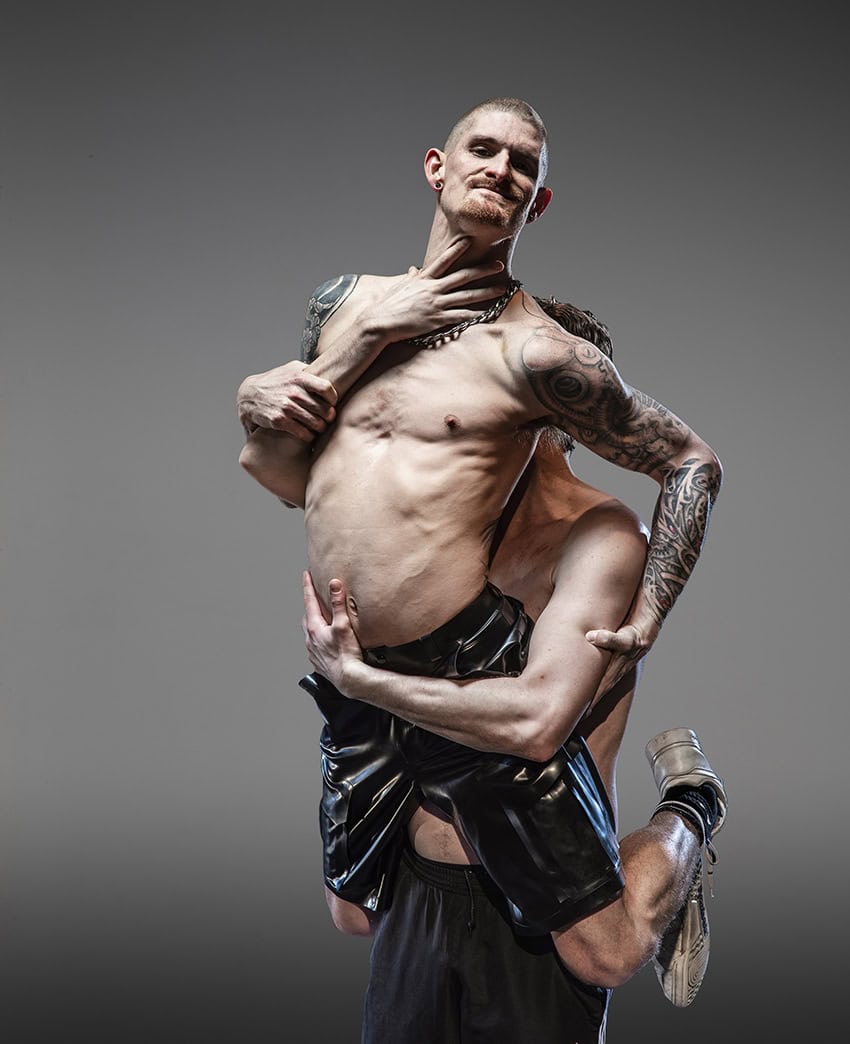The Dan Daw Show at Battersea Arts Centre
Posted: May 24th, 2022 | Author: Nicholas Minns & Caterina Albano | Filed under: Performance | Tags: Christopher Owen, Dan Daw, Emma Bailey, Guy Connelly, Mark Maughan, Nao Nagai | Comments Off on The Dan Daw Show at Battersea Arts CentreThe Dan Daw Show, Battersea Arts Centre, April 28, 2022

The content of The Dan Daw Show is just what it says on the can. It’s about the 38-year-old self-described crip artist Dan Daw, but not in the sense of what Daw does — as in his previous performances ever since his days in Candoco — but what is done to him. It is a show conceived to observe Daw through the lens of his disability: but whose lens? It is self-evidently autobiographical because Daw is the subject of a series of visceral interventions that hold very little back from what he calls the ‘knife edge’ of his sensory life. In his dead-pan preamble, he lets us know we’re in safe hands: ‘I’ve consented to all of this so you can see me in this way,’ and warns us we will be witnessing ‘suffocation, loud noises and sexy disabled people’. On a more sardonic note, he says this is a story ‘about me wanting to be fucked in a society that fucks the disabled.’
I imagine what it must be like to be a dancer with his condition, but this is to miss the obvious: Daw considers himself as a dancer like any other, basing his exploration of movement on his technical ability and his enjoyment of movement on his acute sensation — one of the memorable aspects of the show is seeing Daw’s evident relish in accomplishing everything he sets out to do. ‘This is exactly how I want you to see me; I’m such a messy bitch.’ In as much as what he does is his reaction to what is done to him, the show is choreographed in real time by Christopher Owen (onstage character name KrisX) whose care and empathy make sure Daw is comfortable with the situations in which his undaunted spirit can be challenged. The element of surprise is used throughout — at one point, Owen pulls down Daw’s pants as if in a schoolboy prank to reveal his ‘expensive underwear’. Not everything is easy; Daw suffers from vertigo, which we can see in his first attempt, with Owen’s help, to stand on a table. The tense psychological struggle to overcome his reluctance is palpable, as is his relief at aborting this attempt and acknowledging the scale of the challenge. He succeeds the second time.
But if this is a show conceived through Daw’s lens, it is also refracted through a non-disabled perspective. It is Daw’s very willingness to adapt to our perspective that turns our notion of disability — and thus the entire show — on its head. I can’t help thinking how I would perform for an audience of disabled people. Would I be as natural as Daw and as unconcerned about difference? As keen to embrace the audience with his candour and to enrich them with his pride in who he is? Or perhaps The Dan Daw Show is only possible because, as he points out in the program, our ableist society is based on the default recognition of non-disabled people.
The performance, directed by Mark Maughan, allows Daw to take full control of the space where his disabled image may otherwise have languished. And it is on the stage that he evidently feels most comfortable. After Owen places his body, from the neck down, inside a black latex vacuum cube and removes the air, Daw says he ‘feels safe and relaxed in here, and for me that’s rare.’ His irreverent humour adds that ‘it feels like an expensive, tax-payer-funded hug.’
Emma Bailey’s stage area in the Council Chamber of Battersea Arts Centre fronts a showman’s booth behind a curtain with Nao Nagai’s vertical bank of lights on either side. The curtain hides stage props but is also a screen on which Owen projects a live scan of Daw’s dragon tattoos. Everything Daw speaks to the audience is projected above the curtain on the wall behind, leaving only his candid dialogue with Owen unheard over Guy Connelly’s sound design. It’s a deliberately low-tech production into which accessibility is carefully integrated as both subject and object.
The Dan Daw Show is a constant double-take between artifice and authenticity, between the construction of the show to display Daw and his uninhibited reaction to its devices. In the final apotheosis Daw emerges from the odyssey of his show as its rightful figurehead, strapped into an inflatable, multi-tentacled dragon form, standing as proudly and as enigmatically as his own tattoos. Connelly’s score gears up to an anthem and as the tentacles fill with air and pop into place the pride in Daw’s face is a triumph.